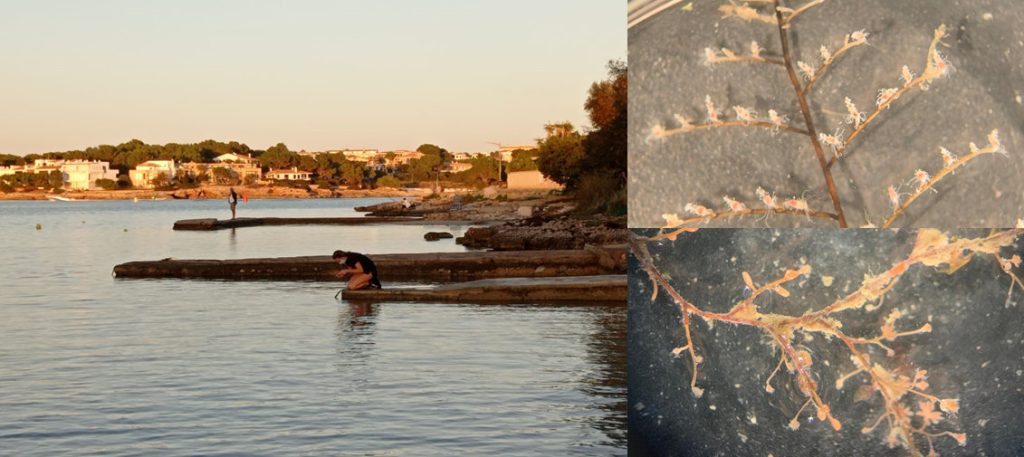NorHydro’s student and collaborator Carla García has just defended her MSc thesis! We asked her to share with us a little bit about her project and this is what she had to say:
During summer 2020 I started learning about hydrozoans through online chats with my supervisor, Luis Martell. At that time, I was not familiar with these curious animals but they caught my attention and by September that year I had already fallen in love with them so I moved to Mallorca to pursue a Master’s Degree in Marine Ecology and work with hydrozoan diversity. For my master’s thesis I worked in a case that was part of project NorHydro (Norwegian Marine Benthic Hydrozoa), led by Luis at the University Museum of Bergen. The global pandemic has put many limits and obstacles in the way of my project, but I have been able to cope with them successfully by combining presential lessons in Mallorca with online courses and meetings with my fellows in Norway.

Me in Mallorca sampling my first benthic hydrozoans (Pennaria disticha and Eudendrium sp.) Picture credits: María Capa and Carla García.
My research was focused in the diversity of genus Euphysa (family Corymorphidae), which had not been assessed in Norway before. I wanted to determine which and how many species of this genus are present in Norwegian and adjacent waters and to characterise them morphologically and genetically. The problem with these animals is that many Euphysa species are not easy to tell apart from each other and there is a big taxonomic controversy within this group. For example, Euphysa aurata is one of the most frequently reported species in Norway, but are we sure that all the records belong to the same species?
Detailed observations of the samples raised my suspicions about the possibility that a complex of species could be hidden within this species name. To try to solve this problem I used an integrative approach combining molecular (DNA barcoding) and morphological analyses (documenting diagnostic characters). The result of this was that we discovered a new species of Euphysa in the waters outside Bergen and we are in the process to describe it!

Medusae of Euphysa aurata (top row) and Euphysa sp. nov. (bottom row), the main taxa covered in my project and two easily confused species. Picture credits: NorHydro and HYPNO.
The first step in the approach I followed was the field work. I gathered samples of hydromedusae and polyps from different localities across the Northeast Atlantic waters and also used some preserved specimens from the University Museum of Bergen. Because last year’s restrictions during the pandemic, part of my samples had to be sent by post to Mallorca, where I carried out the second step: laboratory work. This part included all the steps that go from the DNA extraction to the sequencing of three specific DNA fragments (called barcodes), which allow us to identify and distinguish between species based on similarity with reference sequences from online databases. Then, I applied some phylogenetic analyses and species delimitation tools. What these techniques do is to infer the evolutionary history of the three DNA markers that I sequenced (COI, 16S, and ITS). The results are visualized in the form of phylogenetic trees that we have to interpret and to decide if they are reliable or not. Then, I used species delimitation software to delineate species boundaries. The last step was to look again at the morphology and search for diagnostic characters that allow us to differentiate the species of Euphysa.

Sampling with my lab partners Mariana Strauss and Raúl González. We were looking for hydroids, small worms, and goose barnacles for our respective research projects. Picture credits: María Capa and Carla García.
Each and every life form that make up our planet, no matter how small it is, is a key component to the functioning of the Earth as a whole, and for that they deserve to be studied. Knowing how many species inhabit the Earth has always been one of the main questions of science, so I am really happy to contribute to a better understanding of ocean biodiversity and concretely, to hydrozoan systematics.
If like me, hydrozoans have piqued your curiosity and you want to know more on the activities of NorHydro and my results, you can check NorHydro’s home page and Facebook page, as well as the hashtags #HYPNO and #NorHydro inTwitter.
-Carla García-Carrancio
